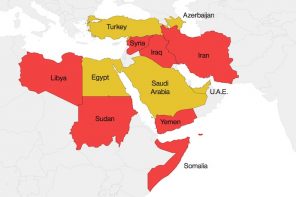Quebec’s proposed ban on public employees wearing religious clothing has received no shortage of attention. Introduced by the Parti Québécois in September, the Charter of Values, as the bill is called, has sparked fiery debates amongst Canadians of various political stripes, been cited as a factor in an uptick of public assaults on Muslim women, and (bizzarely) garnered the praise of the True North Strong and Free’s native singing sensation Céline Dion. Yet for all the public scrutiny, selective anxiety, and theater-like sensationalism of the legislation, it seems that at least three important points are glaringly absent.
1) If one supports, as a matter of principle, a government telling its citizens what they must not wear, logic follows that they would also support a government telling its citizens what they must wear. But it’s unlikely that those so vociferously opposed to Canadian Muslim women wearing the veil in the public workplace would cheer on the authoritarian governments of countries that require the veil, burqa or niqab. More than likely, they would be opposed to that, thus revealing one layer of hypocrisy that is often behind this measure: it’s okay for governments to determine what religious clothing is acceptable or unacceptable, so long as I also share that view.
2) Is it really the case that vast throngs of veiled Muslim women, Sikhs donning turbans, Jews sporting kippahs, or Christians with large crosses dangling from their ears or necks have rushed into the public sector in search of jobs only to be confronted by tensions or unneccesary confrontations that prevent them from serving the public? Are so many of Canada’s public defenders, health care professionals, law enforcement officials, judges, and other government employees expressing their religious beliefs through their clothing — and facing backlash — that a Charter is even necessary? Or is this a case of treating an illness that has not yet been diagnosed — a rigorous program of chemotherapy for a social cancer that doesn’t appear on any imaging? Some numbers from the Canadian government are in order here to prove that this treatment is warranted.
3) It’s telling how this debate has flipped the narrative of the veiled Muslim woman on its head. Once, we were bemoaning the plight of the helpless wife, forced by her brutish husband to cover her hair or face. Now, it’s not really about “saving” her anymore — it’s about saving Canada’s secular values. How quickly we have jumped down from the high moral horse we were riding towards the scene of the Muslim damsel in distress and hoisted flags in a new battle to save “our” homeland from the flimsy piece of silk cloth that covers her lips and nose! Oh Canada, Oh Canada, we stand on guard for thee!




